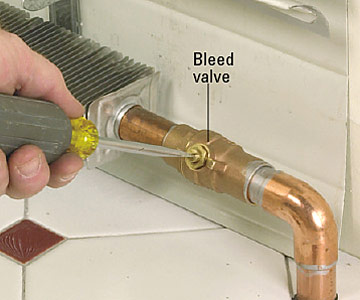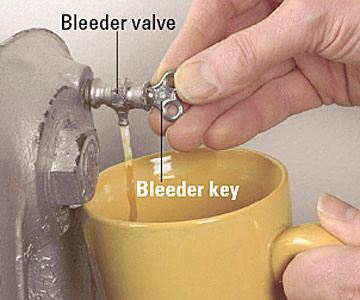When a radiator isn't getting hot it's usually because there is air in the system creating a vapor lock preventing flow. Blockage from rust is all but unheard of, nearly impossible do occur, since the heating system water becomes depleted of oxygen fairly quickly in a closed system.
Ideally there would be an air bleeder valve at every radiator or fin tube baseboard to purge air and get the system flowing again. On baseboards it's usually under the tin on one end of the baseboard or the other- looks a bit like a half-inch hex nut with a tiny tube or hole in one side, with a screwdriver plug in the middle. The center screw is actually a needle valve that opens up, a half or full turn is enough to let the air out, and when the thing stops hissing & spitting, peeing a steady stream you close it back up.
On 80 year old radiators it may have a different form-factor, but the form and function haven't really changed much. It's usually on near the top of the radiator on one end or the other. Some are a little more ornate than others, most antique versions have been replaced after 80 years.
If the system pressure is way low, sometimes the radiators at the top of the house can be at negative pressure. If the boiler is in a full basement with 2 floors above it it needs to read about 12 psi in the basement when the system is idling. If the top of the top radiator is more like 30' above the pressure gauge 15psi would be better, but there's no advantage (and some disadvantages) to running it any higher than 15 psi.



